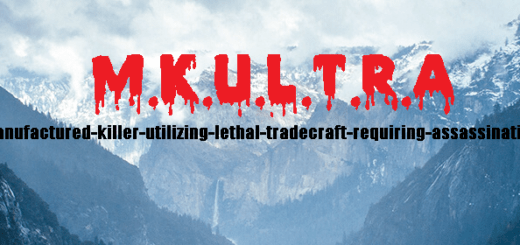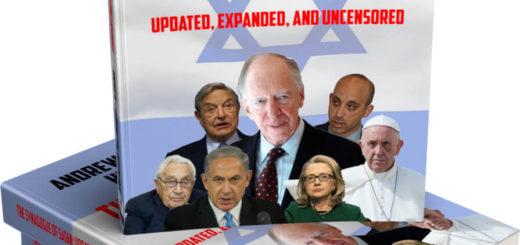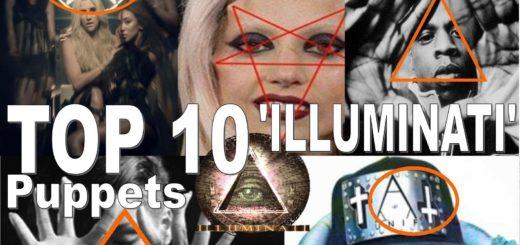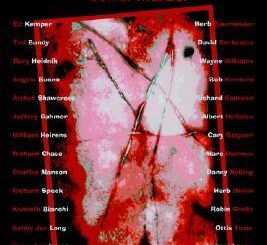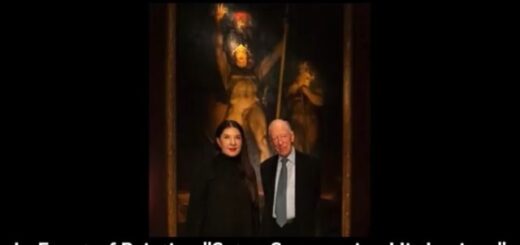Irwin Ozborne, Contributor
Waking Times
Thanksgiving: Celebrating all that we have, and the genocide it took to get it.
Thanksgiving is one of the most paradoxical times of the year. We gather together with friends and family in celebration of all that we are thankful for and express our gratitude, at the same time we are encouraged to eat in excess. But the irony really starts the next day on Black Friday. On Thursday we appreciate all the simple things in life, such as having a meal, a roof over our head, and the connection with those close to us. But in less than 24 hours, we literally trample over others in a mad dash to accumulate as many material possessions as possible at bargain-prices.
So what is the true history of Thanksgiving? Well, just like we have stories of Easter in which a magical bunny hops around the world and hides baskets of goodies for us to find, or stories of Christmas where Santa Claus travels the globe in one night to leave presents under the tree for good boys and girls – Thanksgiving, too, has its traditional myth which we share with our children. We recount stories of the Indians and Pilgrims getting together for a magical feast of brotherly love and appreciation. The only problem is that, unlike the other holidays, we never reveal the truth about Thanksgiving to our children as they grow older. In fact, most of us don’t understand its bloody history ourselves…
The first actual proclaimed “Day of Thanksgiving” came in 1637 in a meeting between the Pequot Indians and English religious mercenaries. The Pequot were celebrating their annual Green Harvest Festival, which resembles modern-day Thanksgiving. On the eve of the festival, the English demanded that everyone comes out of their homes, puts their weapons on the ground, and surrenders by converting to Christianity.
Those who obliged with these terroristic demands were either shot dead or clubbed to death. Those who stayed inside their longhouses – including women and children – were burnt to death. In all, more than 700 Pequot men, women, and children were slaughtered that day.
The “victory” was celebrated by the Governor of Massachusetts Bay Colony holding a feast and trumpeted this as a “Day of Thanksgiving.” During the celebration, they cut off heads of Natives and put them on display publicly; including beheading the Wampanoag Chief and impaling his head on a pole in Plymouth which stayed on display for the next 24 years.
New Family Values
I was in third grade and playing in my back yard, when I noticed a moving truck in the parking lot beyond the fence. We lived in a middle-class suburban community, but right beyond our fenced in yard, there was a Section 8 Housing Community.
As I stood and watched, a young boy around my age came running over to the fence to greet me.
“Hi, My Name is Doug,” he said, “We are moving in next door.”
It’s funny as kids, we are so free and we see someone our age and we just want to be friends. Someone we can spend time with. This shows the natural desire of human connection.
Doug and I became pretty good friends instantly. We spent time at each other’s house often, mostly playing Nintendo or throwing the ball around in the yard.
Until one day, one of my favorite video games was missing. No idea what happened, but the game was gone. We always had anywhere from three to 10 people over at our house and there is no way of knowing what happened to the game or if it was simply misplaced.
“No more going over to that Indian’s house,” my Dad told me, “He took your game.”
Indian? What’s an Indian? I remember thinking that to myself. To me, Doug was just my friend. Now, just like that, he was my Indian-friend. I knew very little about other races at that time. Sure, we saw that people looked different, but never attached a label like that.
The only thing I knew about Indians, I learned in school. And the things I learned in school, was just being passed down from what our teacher’s learned in school with no adjustments to the curriculum. We learned how to sit “Indian-Style,” we learned how to sing “Ten Little Indians,” learned what it meant to be called an “Indian-Giver,” and we learned to play “Cowboys and Indians.”
I can honestly remember in First or Second grade around Thanksgiving, we made headdresses and colored feathers to dress up like Indians. Then they told us how to do war-cries by putting your hand over your mouth and yelling, “Ahh-Ahh-Ooh-Ooh.”
They instructed the class that the Pilgrims came over from Europe to escape religious persecution. Upon arriving in America, they realized that there were already people living here. The brave Europeans encountered the Indians, who wore headdresses, make weird noises, and were uncivilized. So, the
Pilgrims decided to help them out and they had a giant feast together. Everyone got along and then for every year since then, we celebrate Thanksgiving.
But, Doug didn’t do any of those things. I never met an Indian, he was just a normal kid. But, I was told not to trust him. The irony of a white person not trusting an Indian is too much to even comprehend.
“Doug, do you have my video game?” I asked him, “And, I am not allowed to come over here anymore and you can’t come over to my house.”
“No, I don’t have it. Why would I take it? You always let me use it whenever I want,” he replied, “But I understand. I won’t come over anymore.”
As the next couple years went by, I start seeing more movies with Cowboys and Indians with the natives viewed as hostile savages and the cowboys save the country. I am now in fifth grade and have been trained and brainwashed to hate a race of people and believe that I am good and they are wrong. And, still no one has given me an answer as to what happened to all the Indians that lived here?
Then, I gained perspective from the oddest of sources – the comedy movie, “Addams Family Values.” In the movie, the children were at some type of summer camp in which they are putting on a play for their parents, reenacting the first Thanksgiving. All the rich-white privileged kids at the camp were playing the role of the wholesome pilgrims; whereas, the outcasts of the camp were stuck playing the part of the “uncivilized” Indians. As the pilgrims invited the Indians for a meal together, Wednesday Addams –playing the role of Pocahontas (although this is historically inaccurate as Pocahontas lived near the Jamestown Settlement) – decides to go off the script just prior to sitting down for the meal:
“Wait, we can not break bread with you. You have taken the land which is rightfully ours. Years from now my people will be forced to live in mobile homes on reservations. Your people will wear cardigans, and drink highballs. We will sell our bracelets by the road sides, and you will play golf. My people will have pain and degradation. Your people will have stick shifts. The gods of my tribe have spoken. They said do not trust the pilgrims. And especially do not trust Sarah Miller. For all these reasons I have decided to scalp you and burn your village to the ground.” [view scene]
I remember watching this scene and my friends were laughing hysterically, but not me. I was more in shock and awe. It all made sense. I realized that everything I had been told about history was a lie. And I have been searching for the truth ever since.
A National Day of Mourning
We are very impressionable as children and take what elders, parents, and teachers tell us as fact. It gets very difficult to break these thoughts that shape our identity. However, the story of Thanksgiving described above has only a small semblance of truth. The Pilgrims and Indians got together for a giant feast – one time. And in all recorded history of that time, there are actually only two documents of record reporting this event, over the total of three paragraphs – indicating the very minor significant of this event.
Thanksgiving Day is also known as The National Day of Mourning among Native American Tribes. In 1970, there was a huge celebration in Massachussets to celebrate the 350th anniversary of the landing of the Pilgrims. Today, there are still Wampanoags living in the area. On the day of the celebration, they asked one of them to speak:
“Today is a time of celebrating for you — a time of looking back to the first days of white people in America. But it is not a time of celebrating for me. It is with a heavy heart that I look back upon what happened to my People. When the Pilgrims arrived, we, the Wampanoags, welcomed them with open arms, little knowing that it was the beginning of the end. That before 50 years were to pass, the Wampanoag would no longer be a tribe. That we and other Indians living near the settlers would be killed by their guns or dead from diseases that we caught from them. Let us always remember, the Indian is and was just as human as the white people.






